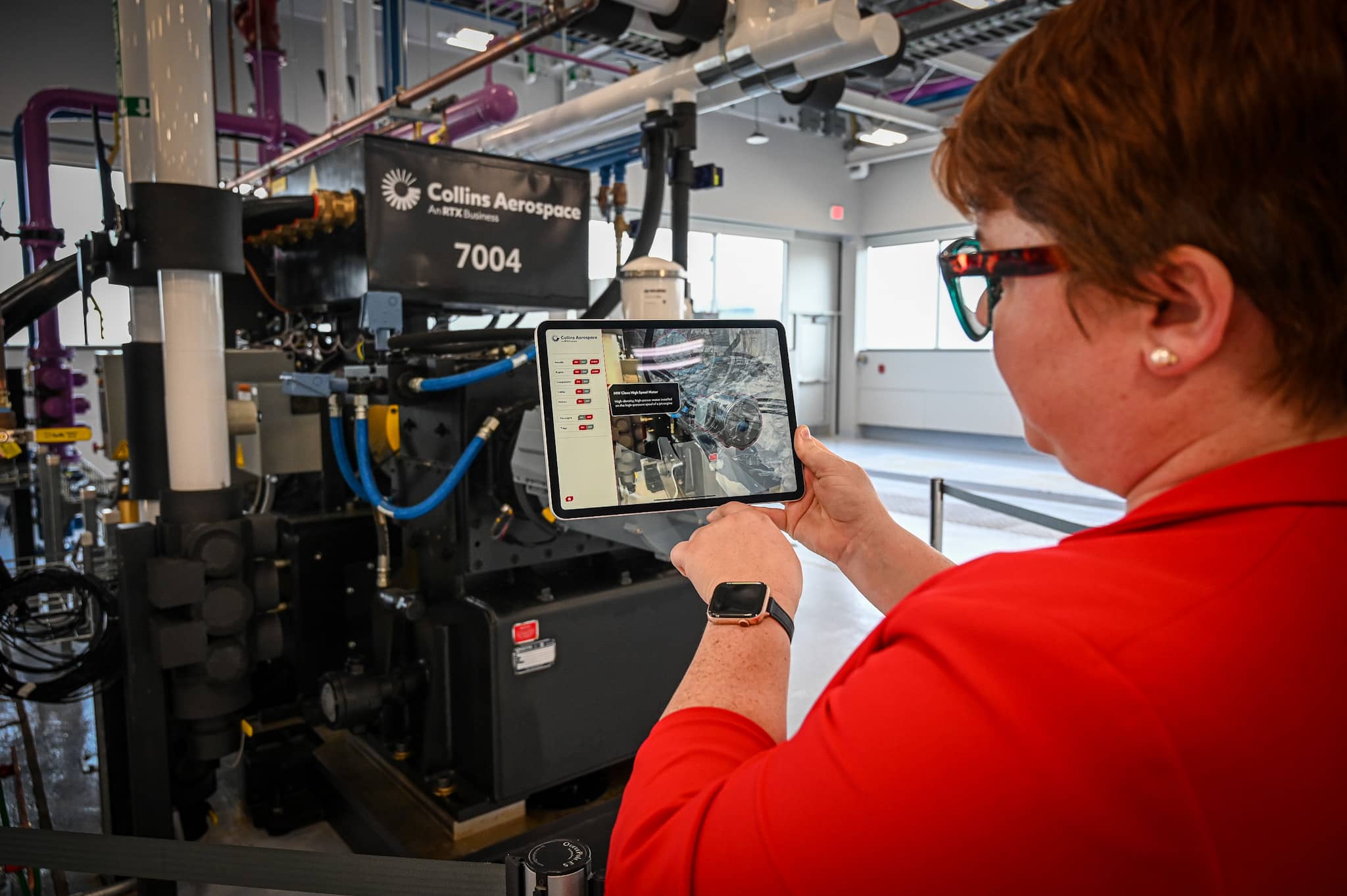
By Kevin Haas
Rock River Current
Get our mobile app
ROCKFORD — Collins Aerospace has unveiled a new advanced power electric systems lab designed to take a new generation of electric-powered aircraft from theory to reality.
It’s called The Grid, and it represents a $50 million investment by the company into its facility at 4747 Harrison Ave. on the city’s south side. The remodeled 25,000-square-foot space was described as “an engineer’s playground” to produce cutting-edge motors, controllers, generators and distrbution systems.
“We’re building what I would call a transformative time in the aerospace industry, and a lot of that’s going on right here in Rockford, Illinois,” said Henry Brooks, president of Power & Controls for Collins Aerospace. “We have the most advanced lab, we believe, of its type in the world.”
Related: Collins Aerospace in Rockford is helping power astronauts’ return to the moon
advertisement
Collins Aerospace celebrated the opening of the facility on Wednesday, providing tours to members of the media and local dignitaries.
“It’s like an engineer’s playground, you can configure it like Lego bricks however you want,” said Steve Kotso, executive director of electric propulsion at Collins Aerospace.
The Grid has an initial test capability of 8 megawatts, and is expected to go up to 15 megawatts. Collins will use it to test its 1 megawattt motor for the RTX hybrid-electric flight demonstrator and the European Union’s Clean Aviation SWITCH program, as well as its 1 megawatt generator for the Air Force Research Laboratory.
More news: A look inside two historic buildings that Rockford plans to sell to a local developer
The facility is considered a central pillar to the aviation industry’s drive to achieve net-zero carbon emissions by 2050.
“For 75 years we’ve been a part of the thermal burning world,” Brooks said. “Now as the industry is changing to a more sustainable future, we say that what Rockford is doing right here in this building is actually helping to create that future.”

The company displayed its 1megawatt motor for the first time and unveiled a 250 kilowatt motor. The company’s technology roadmap calls for a family of electric motors that can be scaled up or down for any aircraft.
“Across the industry, airframers are exploring electrification options for a range of different platforms including unmanned aerial vehicles, business jets, helicopters and single-aisle planes,” Brooks said. “Whatever the application—whether commercial or military, hybrid-electric propulsion or more electric systems—we are working to ensure Collins is ready with the latest electric technology to meet our customers’ needs.”
More news: ‘Hanging on to every minute’: Rockford Speedway racers relish final weeks of the short track
Collins is one of the city’s largest employers with approximately 2,000 workers, and it contributes to the city’s position as a leading aerospace hub, Mayor Tom McNamara said.
“With Collins leading the way here in Rockford, Rockford is the sixth largest aerospace hub in the entire United States,” McNamara said.

Aviation accounted for roughly 2% of global carbon dioxide emissions in 2022, according to the International Energy Agency. If the industry made no improvements, it could account for rough 18% of the world’s greenhouse gases within roughly two decades, Brooks said.
“We will reap the benefits of today’s investments in sustainable aviation with the ability to fly faster, safer and with less impact on our planet,” James Kenyon, director of NASA’s Glenn Research Center, said at Wednesday’s press event. “As we achieve these realities, we’ll continue to revolutionize air travel and innovate for the benefit of humanity.”
The Grid is opening roughly a year after Collins Aerospace in Rockford opened its $18 million wind tunnel, which allowed the company to streamline testing of its Ram Air Turbine product family.
Next for Collins are completing ground testing and conducting test flights for its hybrid-electric engine. That’s expected to happen in the next year.
“That’s a real system. That’s not a sub-scale system,” Francis Preli, vice president of propulsion and materials technologies at Pratty & Whitney, said during the event, gesturing to the 1 megawatt motor. “That’s a system that could replace today’s current engine.”
\
Compiled by Kevin Haas. Email him at khaas@rockrivercurrent.com or follow him on X at @KevinMHaas or Instagram @thekevinhaas and Threads @thekevinhaas

